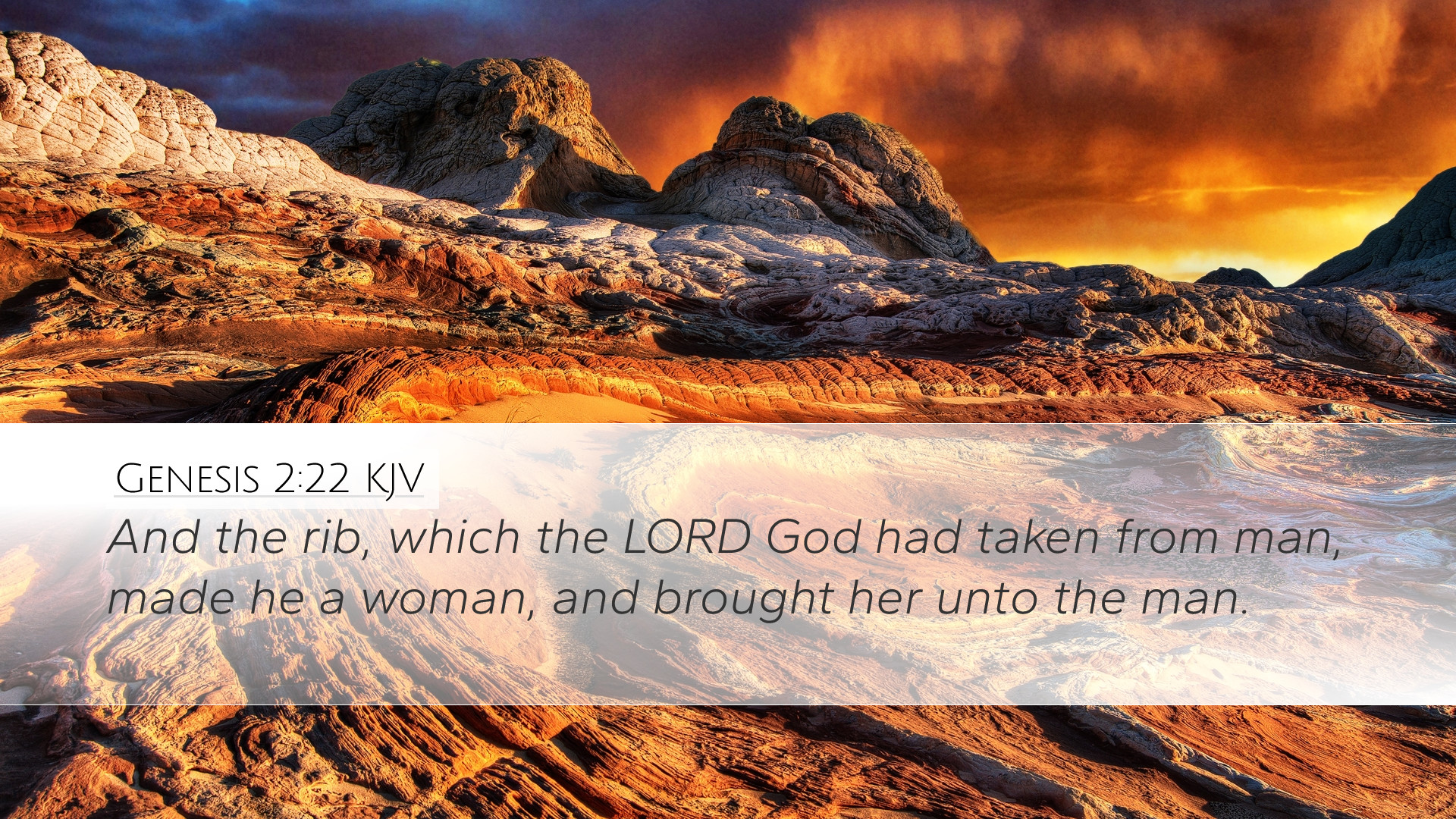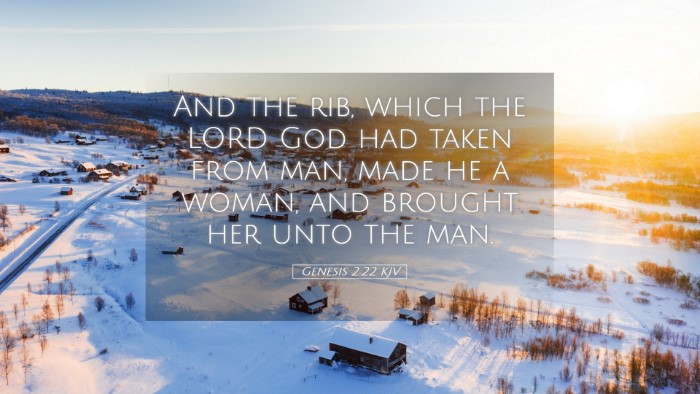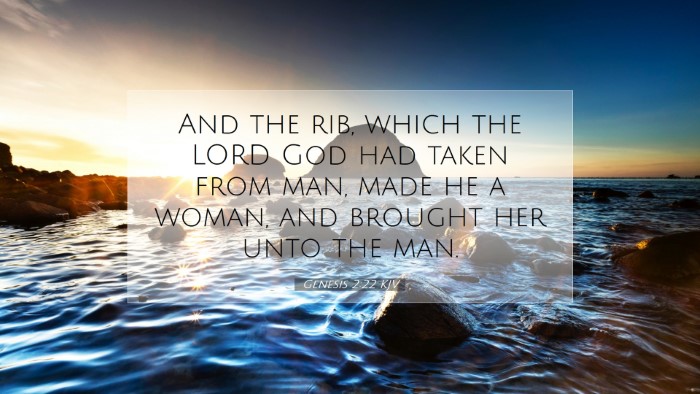Genesis 2:22 - A Commentary
Verse Reference: Genesis 2:22 - "And the rib, which the LORD God had taken from man, made he a woman, and brought her unto the man."
Introduction
This verse presents a pivotal moment in the creation narrative where God fashions woman from the rib of man. This moment not only highlights the intimate connection between man and woman but also serves as a foundational truth regarding the nature of relationships and roles within creation. Insights from esteemed commentators shed light on the theological, social, and relational implications of this passage.
Theological Significance
According to Matthew Henry, the act of creating woman from the rib signifies equality in essence and dignity between man and woman. He emphasizes that the woman was not made from man's head to rule over him, nor from his feet to be trampled upon, but from his side to be equal and near to his heart, illustrating the sanctity of companionship created by God.
Albert Barnes adds that this divine act underlines the special relationship intended by God. He asserts that the creation of woman not only fulfills the need for companionship but also establishes a bond that entails partnership and mutual support. Barnes notes that this moment is foundational for understanding human relationships, profoundly influencing the biblical view of marriage as a sacred institution designed by God.
Cultural Insights
Adam Clarke offers a unique perspective on the cultural implications of this creation story. He suggests that in ancient times, the roles of men and women were often defined by societal structures that were not necessarily aligned with divine intention. Clarke emphasizes that Genesis 2:22 heralds a return to God's original design, where mutual respect and love should characterize the male-female relationship, countering cultural distortions that have emerged over time.
This commentary reveals the timelessness of the scripture, as it calls for reflection on how the modern understanding of gender roles can either reflect or stray from this divine blueprint.
Understanding the Rib
The mention of the rib is deeply significant in various commentaries. Matthew Henry describes the rib as a symbol of the protection and care that both man and woman should exhibit towards each other. The rib, as an anatomical part vital for the structure and support of the body, represents the idea that both genders are essential and interdependent.
Albert Barnes further explicates this by suggesting the rib's proximity to the heart and arm indicates that women are to be cherished and supported. This understanding reinforces the tender nature of their relationship, suggesting that husband and wife are to mutually nourish and uphold one another.
Application for Relationships
The implications of Genesis 2:22 for contemporary relationships are profound. It serves as both a reminder and a challenge for couples to cultivate relationships that reflect mutual respect and partnership. As noted by Adam Clarke, recognizing the origin of woman from man should inspire couples to embrace equality and cooperation, transcending traditional roles that may inhibit a true partnership.
- Mutual Respect: Couples should prioritize recognizing each other’s strengths and weaknesses, appreciating the unique contributions each partner brings to the relationship.
- Partnership: Emphasizing teamwork in decision-making and mutual support fosters a deeper connection and understanding.
- Balance of Roles: In light of this verse, relationships should encourage shared responsibilities within the home and community, reflecting God's design of partnership.
Conclusion
Genesis 2:22 encapsulates the divine intention behind the creation of man and woman: a design rooted in equality, intimacy, and partnership. By drawing from public domain commentaries, various insights illuminate how this ancient text remains relevant for contemporary discussions about gender roles, relationships, and the nature of companionship.
Pastors, students, and theologians are encouraged to delve deeper into this text, allowing it to reshape their understanding of human relationships, and ultimately reflect the love and care that God intended for His creation.


